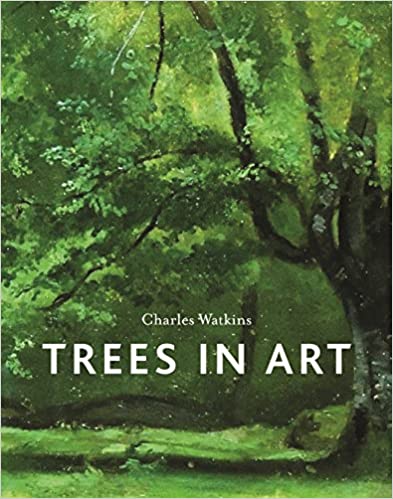From Living Woods Issue 50
CLARE GIBSON enjoys the arboreal and the artistic in this wide-ranging and beautifully illustrated survey of trees in art.

TREES IN ART
Charles Watkins
Reaktion Books
256 pages
203 illustrations, 201 in colour
ISBN 978-1-780239-309
No coffee-table book this, all flashy pictures and minimal text, which is not to say that Trees in Art isn’t aesthetically pleasing, because its thick pages and exquisite colour reproductions make it a delight to leaf through. Unlike many coffee-table books, the carefully selected images actually correspond to those discussed in the text, each chosen to illustrate a pertinent point about humankind’s relationship with trees.
At first sight, Trees in Art is, then, a cut above its competition, being a proper academic book complete with references, bibliography and index. Don’t let that put you off, through, because it is also immensely readable. Maybe this is because the author, Charles Watkins, is a professor of rural geography rather than a highfalutin’ art historian, but it certainly means that anyone who cares about trees will find much to learn from his unique take on arboreal art.
A wide-ranging historical survey of humankind’s portrayal of trees (mainly in Western art), the book’s ten chapters take us from the rock art of Late Stone Age Zimbabwe to Ai Weiwei’s recent tree sculptures. During this journey, the text touches on the magical and mythical, the sacred and symbolic, while never losing sight of the mundanities of wood management. Indeed, the author’s in-depth knowledge of rural landscapes provides the reader with a fascinating overview of the history of tree and land management as depicted in art. One chapter is devoted to lops and pollards, for example, another’s focus is forest interiors, while a third is devoted to trees and timber.
The most compelling chapters, for me, though, touch on the magical properties with which humans have always endowed trees. In ‘Trees and ancient stories’, the arboreal myths told in Ovid’s Metamorphoses are introduced, most famously the transformation of the nymph Daphne into a laurel tree. ‘Sacred trees’ surveys some of the trees that have been credited with having supernatural qualities, and traces the link between trees and Christianity, be it through church pillars carved with leaves, stained-glass Jesse trees or Catholic wayside shrines.
The historical chapters are equally interesting. ‘Nationality, revolution and war’ starts with a discussion about the trees carved on Trajan’s Column and stitched into the Bayeux Tapestry and goes on to outline how the depiction of trees has reflected national events and preoccupations. The drily titled ‘Western art abroad’ turns out to be a rather riveting exploration of how arboreal art was often a by-product of Western expansionism and imperialism – and of the adventurousness of intrepid artists.
Art is the focus of the final chapter, which presents images of weird and wonderful trees, from the monstrosities imagined by Bosch to the conceits of contemporary conceptual art, touching along the way on the uses of wood itself in the making of art. Art aside, the great strength of this book is Watkins’ text, which brings a forester’s eye to arboreal art through the ages and provides an illuminating insight into the contexts in which it was made.